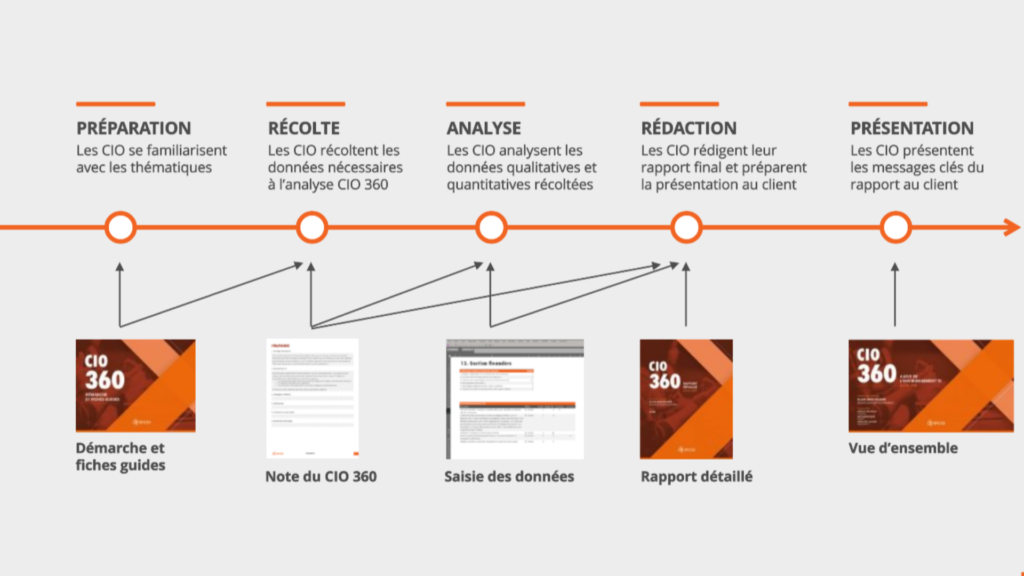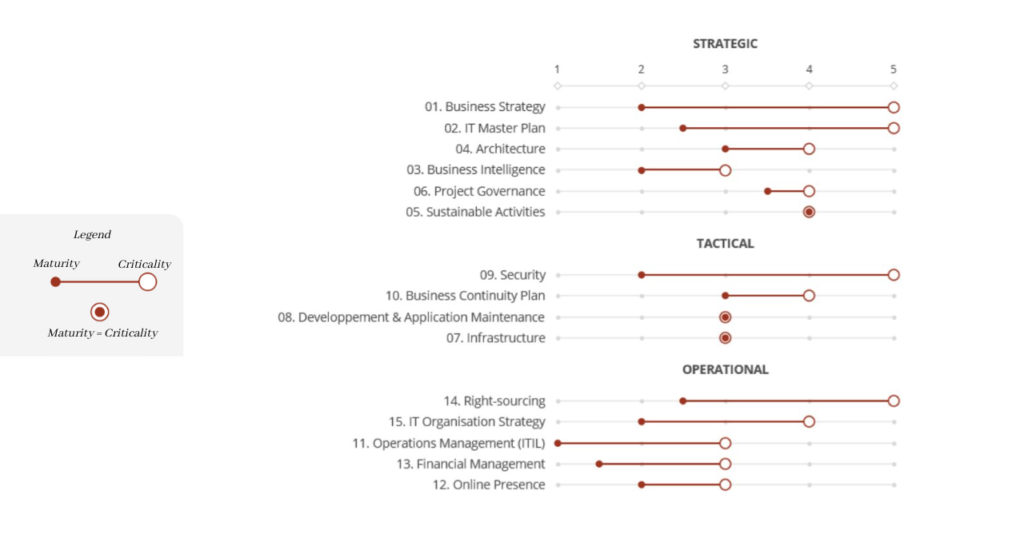
IT Audit, why is it a good investment?
The IT audit, or IT function diagnostic, is the first phase of the CIO-360 that leads you to an IT master plan. In this article we explain in more detail the key steps of this first phase.

Figure 1 – IT audit process
As digital transformation affects more and more businesses, IT teams play a vital role in the making, development and execution of technological tools for all areas of business activity.
Many IT teams are working frantically to deliver the growing list of projects at the same time as ensuring user satisfaction on more operational projects. This often does not optimize the way the team works and ensure that they work more efficiently. Not to mention that the daily routine in which the team is so busy definitely affects the morale and culture in the workplace. There is also a high risk of costly mistakes and negligence.
By working with IT teams of many companies across the country, Eficio consultants see how a unified system of talent, tools and processes can help technology teams take their work to a new superior level. On the other hand, large corporate projects fail to execute and meet target budgets due to misaligned teams and inefficient systems and processes.
The best IT teams succeed because all elements of talent, tools, and processes are operating at their highest potential. That’s why taking a step back to audit and optimize your IT department is one of the best investments you can make for your team.
Contrary to what some might believe, performing an IT audit does not have to be a long, tedious and expensive process. And the effort can pay off!
Here are three reasons why leaders should invest in an IT audit and how to get the most out of it.
- Obtain critical feedback: One of the first steps in any audit is to gather a wide range of feedback from stakeholders on what is working and what is not. Here, think beyond your current team members and include IT customers (internal and external). This feedback should help you discover your team’s current strengths and focus your attention on areas where you can improve. Eficio uses in its CIO-360 approach, 15 control sheets about different IT governance themes.
- Identify best practices: It’s easy to get caught up in your own way of doing things. Sometimes that’s okay. But sometimes you don’t know what you don’t know. Review best practices for IT processes, requirements, deliverables, development, quality assurance, and service delivery to spot small tweaks or big changes you need to make to help your team do better. The CIO-360 analysis grids provide a perspective on IT best practices on the 15 IT governance themes.
- Make decisions based on facts: Intuition and instinct are good for some decisions, but when it comes to successful IT teams, it is often better to make decisions based on facts. The verification process gives you the data you need to make recommendations for changes that optimize your team’s success. This will help you optimize your team’s performance and ensure everyone is on the right track.
As in any team environment, it takes the right mix of talent, tools, and processes to keep IT teams working to their highest potential. Doing a smart IT audit can be one of the best steps a technology manager can take to help the team achieve optimal success by working smarter.
The 15 themes of the CIO-360
The diagnosic is made on 15 IT themes which are grouped into 3 axes areas of governance: strategic, tactical and operational. For each of the themes, a sheet and tools support the CIO in his observations and recommendations for improvement. The 15 sheets are:
Strategic
1- Business Strategy
2- IT master plan
3- Applications & BI
4- Architecture
5- Eco-responsible activities
6- Project governance
Tactical
7- Infrastructure
8- Application development & maintenance
9- Security
10- Business continuity plan
Operational
11- Operations Management (ITIL)
12- Online presence
13- Financial management
14- Right sourcing
15- Organizational strategy
The observations related to the best practices of each theme allow us to qualify the elements of maturity vs criticality for the organization. The analysis makes it possible to summarize these indicators according to the following table:

Figure 2 – Example Maturity/Criticality Indicators
Once the audit has been established and validated with the management of the organization, we can move on to prioritizing improvement initiatives and summarizing the projects to derive an IT master plan. This topic is covered in our next article “IT Master Plan”.
Do you have an audit project in mind? Let’s start a discussion.

